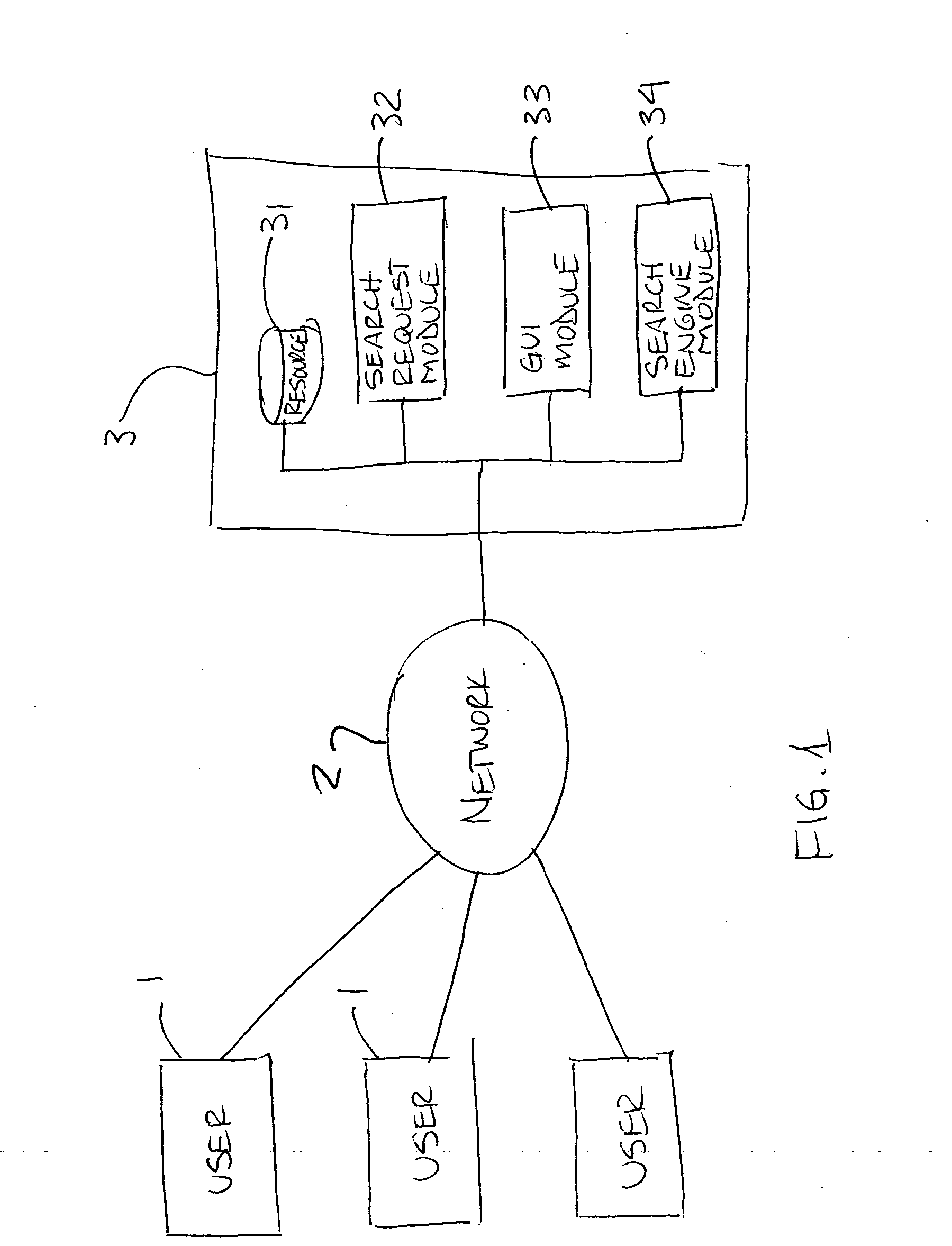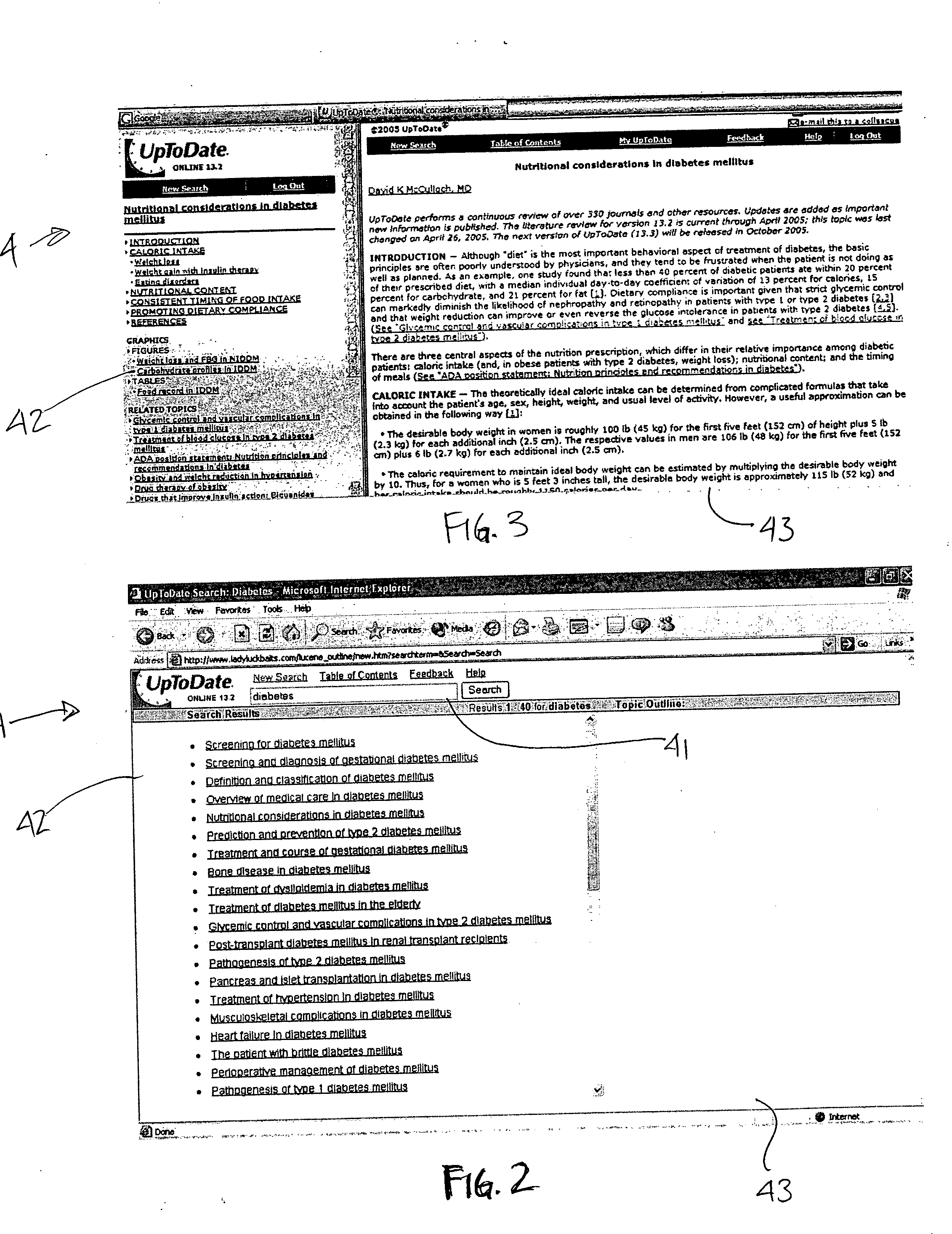[0010] Although these techniques may make it easier for a user to choose useful results, the inventors have found that each technique has positive and negative attributes. For example, listing a portion of each corpus entry may allow users to see some of the content of the referenced document, giving them additional context for determining whether a result might be relevant. However, including additional content for each search result listing makes the list of results longer. Users may have more to read when looking at a list of search results, and they may therefore miss some relevant results. At least one study has shown that a large majority of users rarely read past the first three pages of search results and nearly one-quarter of users rarely read past the first few results. If a list of search results is lengthened by the inclusion of additional content, users may peruse fewer results overall and may miss some useful results that are farther down in the list.
[0016] In another aspect of the invention, a
system for providing computer search results includes a
medical information resource having a plurality of stored information sets, where each of the information sets includes information relevant to at least one topic related to providing health care. For example, each information set may be content (e.g., a document, a topic, a graphic, a
paragraph, etc.) that includes written text, charts, images or other graphic information, reference to published articles and other documents, etc. A search request module may receive a search request from a user to identify one or more information sets in the medical
information resource. The search request may include at least one search criterion that represents one or more forms of content to be included in an information set to be identified in a search result, such as a keyword or other term or representation used to identify relevant documents. A
search engine module may perform an analysis of information sets in the medical
information resource to identify one or more information sets that satisfy the search request, thus identifying the one or more information sets as being part of a search result. A graphical
user interface module may provide a first graphical
user interface that includes a list of first indications for each of the one or more information sets identified in the search result. The first indication may be any suitable representation of an information set, such as a title for a document. The graphical user interface module may display additional information for an information set presented in the first graphical user interface based on the user's selection of the first indication for the information set in the list. The additional information may be incorporated into and displayed simultaneously with at least a portion of the first graphical user interface, yet be displayed separately from the list of first indications. For example, if a user positions a mouse cursor over a document title in the list in the first graphical user interface, an outline for the document may be presented in a separate pane in the user interface, or the outline may be presented in a non-obscuring position in the same pane of the first graphical user interface. The outline may allow the user to evaluate the document and determine if it is suitable for further review. By displaying the additional information separately from the list of first indications for information sets, the list may be kept relatively short, thereby helping the user to review the search results more effectively.
[0017] In another aspect of the invention, a method for presenting search results in a computerized medical
information resource includes receiving a search request from a user to identify one or more information sets in a medical information resource. The search request may include at least one search criterion that represents content to be included in an information set to be identified in a search result. An analysis of information sets in the medical information resource may be performed to identify a search result that includes one or more information sets that satisfy the search request. A first indication for each of the one or more information sets identified in the search result may be presented to the user in a list in a first graphical user interface. Additional information for an information set presented in the list of the first graphical user interface may be presented based on the user's selection of the first indication for the information set. The additional information may be displayed separately from and simultaneously with at least a portion of the list in the first graphical user interface, e.g., allowing the user to evaluate a document without having to navigate through multiple display screens.
 Login to View More
Login to View More  Login to View More
Login to View More 


